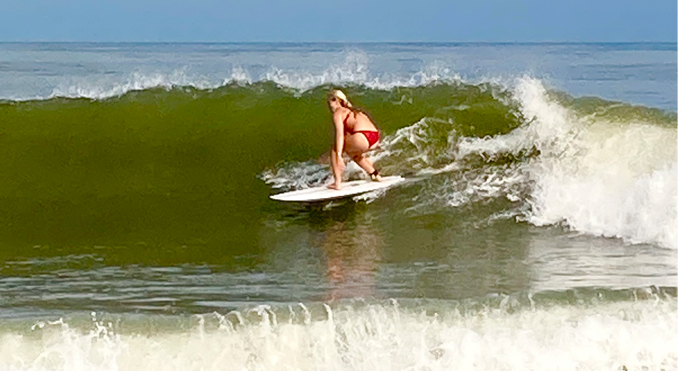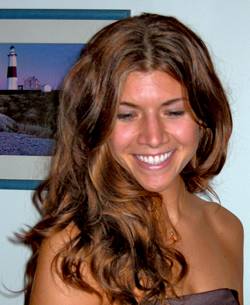
August 2021
Fit for Surfing

If you want to be a better surfer, the best advice is to…surf more. But if you want to be stronger, nimbler, and better at bouncing back after a wipe out, you can look beyond your few sessions a week in the sea.
Luckily in Montauk there are endless options for training outdoors, which pairs well with the affinity for being in nature, and why we surf in the first place. It will also help your surfing.
Getting fit outside of the water through cross training keeps you in cardio-vascular shape, enhances your flexibility and increases your strength. While surfing takes a tremendous amount of skill, boosting your fitness in the long run will also help to protect you from injury.
Maybe you know that the nature of surfing means you are going to get thrashed around a bit. Perhaps you can still surf well even when you are not feeling as rested and inspired as you would like. What if you can feel better mentally and physically no matter what your condition is on the day you paddle out?
Ultimately surfing always eclipses cross-training when there are waves. Focusing on other physical activity between sessions keeps you healthy and fit, so engage in a routine that can bolster your surfing. The goal of making your activities functional and complimentary to surfing is a powerful combination to motivate you to stay with it.
We paddle a lot, surf waves and swim when we fall, and we also spend a lot of time sitting on the board, waiting. Some days we do not have surf or paddle out at all, so even the most avid surfer on the east end can benefit from additional physical activity. Long stretches between swells or transferring into a suit (or heavier suit) can feel like being out of surf-shape all over again.
Using your own body weight when you train plus adding resistance can be fun when to performed outside rather than in a gym. We have access to hiking the trails, horseback riding, playing tennis, going for a bike ride, or run, doing yoga, and doing basic resistance training, all in nature. The simplicity of push-ups for paddle strength, plank pose for your core, and zeroing in on posterior muscle groups will strengthen your pop-ups.
Surfing is all about rotational movements, not just staying on the sagittal plane. A variety of yoga poses, running in the sand, hiking and cycling work the muscles for pelvic stabilization and mobility. Tennis, like surfing uses transverse and frontal planes of motion. We also tend to favor one side of the body over the other or focus on the anterior rather than the posterior muscle groups. By simply being a regular or goofy foot, one side of our body is automatically ignored.
It is time to find balance. To catch more waves, have longer sessions, enhance our longevity and ability to surf in the future, capitalize on staying fit in and out of the water.

